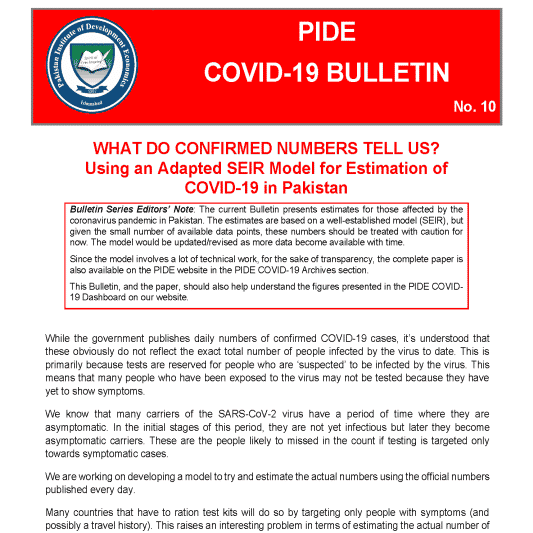
Pakistan Institute of Development Economics
- Home
Our Portals
MenuMenuMenuMenuMenuMenuMenu - ResearchMenuMenuMenuMenuMenuMenuMenu
- Discourse
- The PDR
- Our Researchers
- Academics
- Degree Verification
- Thesis Portal
- Our Portals
WHAT DO CONFIRMED NUMBERS TELL US? Using an Adapted SEIR Model for Estimation of COVID-19 in Pakistan
While the government publishes daily numbers of confirmed COVID-19 cases, it’s understood that these obviously do not reflect the exact total number of people infected by the virus to date. This is primarily because tests are reserved for people who are ‘suspected’ to be infected by the virus. This means that many people who have been exposed to the virus may not be tested because they have yet to show symptoms. We know that many carriers of the SARS-CoV-2 virus have a period of time where they are asymptomatic. In the initial stages of this period, they are not yet infectious but later they become asymptomatic carriers. These are the people likely to missed in the count if testing is targeted only towards symptomatic cases. We are working on developing a model to try and estimate the actual numbers using the official numbers published every day. Many countries that have to ration test kits will do so by targeting only people with symptoms (and possibly a travel history). This raises an interesting problem in terms of estimating the actual number of infected people at any time, given that we only know the confirmed cases. We need actual numbers if we are to project the course of this infection and plan accordingly. Furthermore, individuals who test positive are likely to be quarantined. This will have some impact on the dynamics of the contagion in the population and makes our estimation problem more intriguing.



